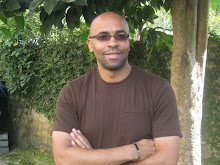To Heal Haiti, Look to History, Not Nature
The new nation, its fields burned, its plantation manors pillaged, its towns devastated by apocalyptic war, was crushed by the burden of these astronomical reparations, payments that, in one form or another, strangled its economy for more than a century. It was in this dark aftermath of war, in the shadow of isolation and contempt, that Haiti’s peculiar political system took shape, mirroring in distorted form, like a wax model placed too close to the fire, the slave society of colonial times.
The whites on their plantations had done this directly, exploiting the land they owned with the forced labor of their slaves. But the slaves had become soldiers in a victorious revolution, and those who survived demanded as their reward a part of the rich land on which they had labored and suffered. Soon after independence most of the great plantations were broken up, given over to the former slaves, establishing Haiti as a nation of small landowners, one whose isolated countryside remained, in language, religion and culture, largely African.
Unable to replace the whites in their plantation manors, Haiti’s new elite moved from owning the land to fighting to control the one institution that could tax its products: the government. While the freed slaves worked their small fields, the powerful drew off the fruits of their labor through taxes. In this disfigured form the colonial philosophy endured: ruling had to do not with building or developing the country but with extracting its wealth. “Pluck the chicken,” proclaimed Dessalines — now Emperor Jacques I — “but don’t make it scream.”
In 1806, two years after independence, the emperor was bayoneted by a mostly mulatto cabal of officers. Haitian history became the immensely complex tale of factional struggles to control the state, with factions often defined by an intricate politics of skin color. There was no method of succession ultimately recognized as legitimate, no tradition of loyal opposition. Politics was murderous, operatic, improvisational. Instability alternated with autocracy. The state was battled over and won; Haiti’s wealth, once seized, purchased allegiance — but only for a time. Fragility of rule and uncertainty of tenure multiplied the imperative to plunder. Unseated rulers were sometimes killed, more often exiled, but always their wealth — that part of it not sent out of the country — was pillaged in its turn.
In 1915 the whites returned: the United States Marines disembarked to enforce continued repayment of the original debt and to put an end to an especially violent struggle for power that, in the shadow of World War I and German machinations in the Caribbean, suddenly seemed to threaten American interests. During their nearly two decades of rule, the Americans built roads and bridges, centralized the Haitian state — setting the stage for the vast conurbation of greater Port-au-Prince that we see today in all its devastation — and sent Haitians abroad to be educated as agronomists and doctors in the hope of building a more stable middle class.
Still, by the time they finally left, little in the original system had fundamentally changed. Haitian nationalism, piqued by the reappearance of white masters who had forced Haitians to work in road gangs, produced the noiriste movement that finally brought to power in 1957 François Duvalier, the most brilliant and bloody of Haiti’s dictators, who murdered tens of thousands while playing adroitly on cold-war America’s fear of communism to win American acceptance.


0 comments:
Post a Comment